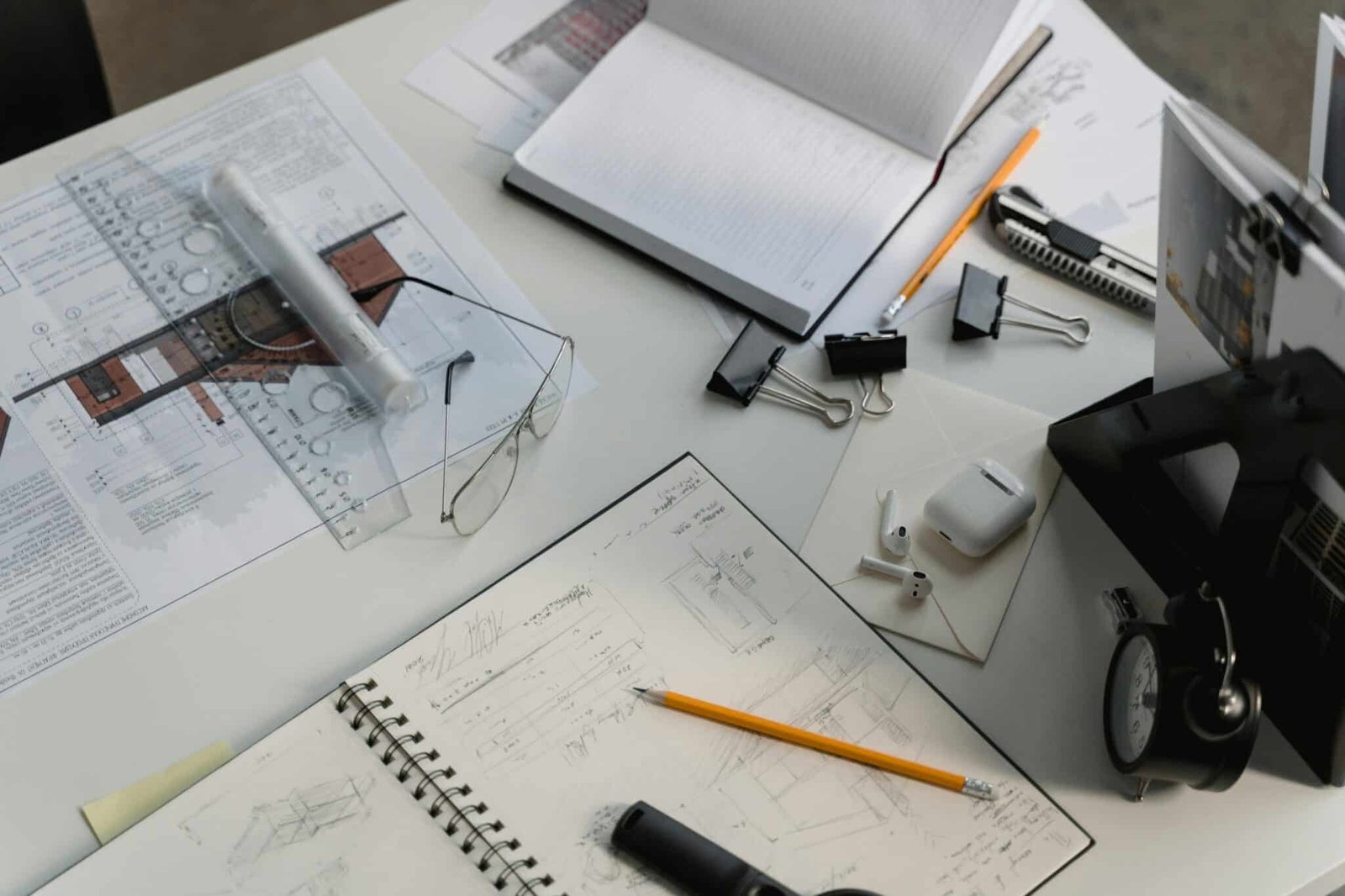Learn how to write a research paper easily with a clear plan. From choosing your topic to final editing, follow these simple steps and helpful tips.
How to Write a Research Paper: All You Need to Know About Research Journal
Writing a research paper can feel hard at first, but it is an important skill in school. You might wonder, “how to write a research paper” when your teacher assigns one. If that’s you, don’t worry – this guide will break the process into simple steps and easy tips. Writing a research paper improves your writing and thinking skills. In fact, research shows writing research papers builds critical thinking skills.
What is a Research Paper?
A research paper is a piece of academic writing that presents analysis and argument based on detailed research. It is usually longer and more detailed than a normal essay. It shows how well you know a topic by discussing many sources of information. Research papers often test both writing and research skills. They ask you to find facts in books or articles, and then explain those facts in your own words to prove a point. This means you must understand what you read and give credit to the authors of your sources by citing them.

Research papers are common assignments in middle school, high school, and college. They might seem scary, but remember: if you break the task down, it becomes simple. You start with a question or topic, then look for answers in books, websites, or videos. For example, if you write about “the history of video games,” you might search online or in the school library. Later, you organize what you learned and write it in clear sentences. Writing a research paper is like telling a story about what you learned, with evidence from your research.
Why Write a Research Paper?
Teachers give research papers, so students learn to gather information and explain it. When you write a research paper, you practice writing skills. Research experts say writing research papers helps students learn to gather facts, analyze data, and explain ideas clearly. These skills help in many jobs as well. Doctors, scientists, and engineers all write reports about what they discover. Even writers and journalists write about things they learn. Good writing requires organization and clear ideas. See our blog post on SEO writing for more tips on organizing writing.
Doing research also teaches you to be curious and organized. You learn to ask good questions and seek answers. By writing a paper, you understand your topic better and remember it longer. It can boost your grades and your confidence. Remember, famous scientists and authors started by exploring things they were curious about. Writing about what you learn is a key step. Our Academic Broadcasting Platform blog covers many study and writing tips for students, including how to plan and write reports and essays.
How to Write Your Research Paper: Step-by-Step
Here are the main steps to follow when writing a research paper. Take one step at a time.
- Choose a topic. Pick something you find interesting. The more you like the topic, the easier it is to research and write. For example, instead of choosing “science,” pick “how do solar panels work?” or something specific you enjoy. Make sure the topic is not too broad (like “animals”) or too narrow. A topic like “why do cats purr?” is specific and researchable.
- Do preliminary research and keep notes. Use books, library databases, or credible websites to see what information exists on your topic. For example, if your topic is “recycling at home,” search for simple keywords like “home recycling tips” or “why recycle.” As you read, write down important facts and sources. Use notes cards or a notebook. Record the author, title, and page number of any book or article you use. Purdue OWL suggests keeping good records of sources as you research. This way, you won’t lose track of where you found each fact.
- Form a thesis statement. Write a clear sentence that states the main idea or argument of your paper. It should answer the question your paper is about. For instance, for a recycling paper: “Recycling plastic and paper at home protects the environment by reducing waste and saving resources.” A good thesis is specific and focused. You will refine it as you gather more information.
- Make an outline. Plan the structure of your paper by outlining the main sections. Typical sections include the introduction, several body paragraphs, and a conclusion. Under each section, list the key points or facts you will include. An outline helps you organize your thoughts. For example, under “Benefits of Recycling,” you might list “reduces pollution,” “saves energy,” and “creates jobs” as subpoints.
- Write a first draft of the body. Now start writing the body of your paper using your outline. Each paragraph should cover one main idea. Begin the paragraph with a topic sentence, then add the facts, examples, or quotes that support it. Use your own words to explain the information you found. Don’t worry about mistakes yet—just get the ideas down.
- Write the introduction and conclusion. After the body, write the introduction and conclusion. In the introduction, begin with a hook to grab attention (like a surprising fact or question). Then give some background on the topic and end with your thesis. In the conclusion, restate your thesis in new words and summarize the main points. You can also suggest why the topic matters or what to explore next.
- Revise and edit your draft. Read through your draft and improve it. Check each paragraph: does it have one main idea? Are the ideas clear? Add more explanation where needed. Fix any awkward sentences. Then check for spelling and grammar errors. Tools like spell-checkers or reading aloud can help. You can also have a friend or family member review it.
- Cite sources and finalize. Make sure you give credit for any information you did not write yourself. Add citations or a bibliography using a standard style (like APA or MLA). Check the formatting rules (font, margins, headings) required by your teacher. Finally, do a full proofread. Read it carefully or use an online tool to catch any last errors.
Even though this looks like many steps, remember to go slowly. As one college writing guide explains, steps like these (choose topic, research, outline, draft, revise) are the proven way to complete a research paper successfully.
Tip: Start early and set a schedule, like one step per day, to finish on time.
Tip: Keep all your notes and outline in one place, like a notebook or a digital folder. This keeps you organized and saves time when writing.
Research and Organize Information
Once you have a topic and thesis, do more detailed research. Read books, articles, or use trusted websites to collect facts. It is best to use a mix of sources. For example, you might find a useful explanation in a textbook, a news article online, or a video from a university site.
As you gather information, decide which ideas go together. It helps to reorganize your outline based on what you find. You might combine two points or split one point into two paragraphs. Organize your notes by topic. For instance, if your paper has a section on “energy savings,” put all facts about energy in one place.
Always check the quality of a source. University and government websites (ending in .edu or .gov) are usually reliable. Be careful with random websites or blogs—only use them if they cite real facts. If you find conflicting information, try to find the most recent or well-explained source.
If you get stuck, discuss ideas with someone or try a different search term. Remember that research takes time and sometimes finds surprising facts that can change your thesis. Be flexible and update your outline as you learn more.
Research Tips:
- Use library databases or Google Scholar for credible articles.
- Keep track of every source’s title and author right away.
- Look for different perspectives on your topic (some sources may disagree, which is fine).
Writing the Research Paper
Now write your paper using your outline. Write clearly and in full sentences. Start each paragraph with a topic sentence that tells one main idea. Then give examples or data to back it up.
Explain things in your own words. If you quote someone exactly (word for word), put it in quotation marks and cite the source. Using a consistent citation style (APA, MLA, etc.) helps your paper look professional and lets others check your sources.
Try to make connections between ideas. Use words like “for example,” “however,” “because,” and “in contrast” to link sentences. For instance, write “Recycling saves energy because making new products from recycled materials uses less power than using raw materials.”
Introduction, Body, Conclusion
- Introduction: Begin with something to catch attention, like a question, a quote, or an interesting fact. Give a little background, then present your thesis. Explain what the paper will show.
- Body Paragraphs: Each paragraph covers one main idea that supports your thesis. Start with a topic sentence. Then add facts, quotes, or examples that explain that idea. Always explain how the evidence relates to the point. Keep paragraphs focused; if an idea is too big, split it into two.
- Conclusion: Summarize the most important points. Restate the thesis in different words. You can end with a final thought, like suggesting what could happen next or why the topic is important. Don’t introduce new facts here.
When writing, imagine explaining to a friend who knows nothing about the topic. This keeps your language simple. Use short sentences. If a sentence feels long, break it into two. This makes your paper easier to read.
Writing Tips:
- Write in your own words and voice; avoid copying phrasing from sources.
- Check each paragraph flows to the next; reorder if needed.
- Use simple words and explain any hard terms you use.
- Stay on topic: each sentence should relate to your main point.
Always keep your thesis in mind and review each sentence to ensure it supports your main idea. Reading your paper aloud can help you spot mistakes or unclear phrases.
Revising and Polishing
After drafting, take a short break, then read your paper again with fresh eyes. Look for parts that are unclear and fix them. Check if each paragraph has the right information and examples.
Proofreading is next. Check spelling, punctuation, and grammar. Tools like spell-checkers or Grammarly can help. Make sure citations and formatting follow the required style.
Here are some final tips:
- Read it aloud: This helps you notice missing words or awkward phrasing.
- Check format: Ensure your paper uses the right heading, font, and spacing as asked by your teacher.
- Verify sources: Each quote or fact taken from a source should have a citation and be listed in a bibliography.
- Stay within limits: If there’s a word count, make sure you meet it without adding filler or cutting important info.
No research paper is perfect on the first try. If possible, ask a peer or teacher to read your draft and give feedback. Then make final improvements.
Recommended Books for Writing Research Papers
If you want more help learning how to write a research paper, these books can guide you:
- How to Write a Great Research Paper: A Step-by-Step Handbook by Leland Graham. This is a clear, student-friendly guide for younger writers (ages 10–13). It walks you through each step of research writing and includes practice exercises. (4.4/5 stars).
- Writing Research Papers: A Complete Guide, 15th Edition by James D. Lester. A thorough guide covering every stage of writing research papers. It includes sample papers, tips on developing topics, and clear advice on citation styles. (4.4/5 stars)
- A Manual for Writers of Research Papers, Theses, and Dissertations, Ninth Edition by Kate L. Turabian. A classic style manual used by college students. It explains formatting and citation rules. (4.7/5 stars)
- The Craft of Research, Fifth Edition by Wayne C. Booth et al. An influential book on conducting research. The fifth edition adds updated examples and covers modern research tools. (4.8/5 stars)
- Research Papers For Dummies by Geraldine Woods. An easy-to-read overview that covers research from start to finish. It includes types of papers, basic structure, and tips to avoid mistakes. (4.4/5 stars)
These books provide more examples and practice. Check if your school or local library has them. They often explain step-by-step just like this guide.
Conclusion
Writing a research paper is like solving a puzzle one step at a time. Start early, follow a plan, and keep your ideas clear. Remember to write in your own words and cite your sources. Use short sentences and an outline to stay organized. Review and improve your paper before finishing. With practice, you will become a stronger writer and learn more about your topic every time.
Also, visit Academic Broadcasting Platform for getting more educational blogs and related books and products.












